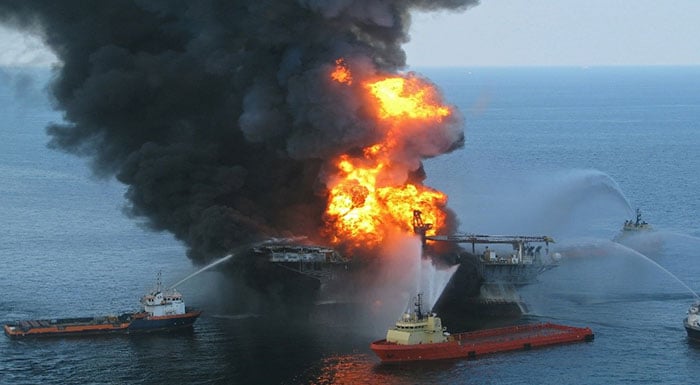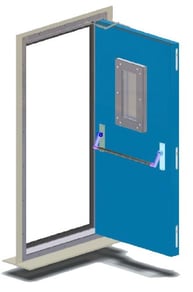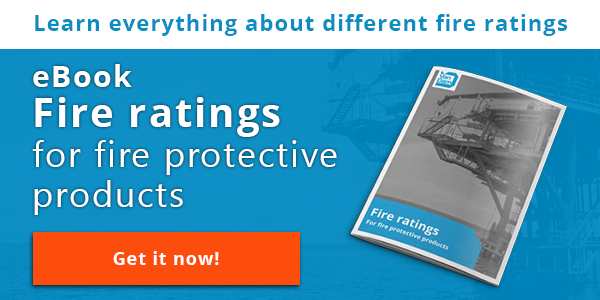
Hydrocarbon fire, or pool fire, is a fire fuelled by hydrocarbon compounds (oil and gas), having a high flame temperature of 1000°C (1832°F) within 5 minutes and 1100°C (2012°F) after 5 minutes, achieved almost instantaneously after ignition. This fire is more intense, fierce and spreads much more rapidly than cellulosic fire. “H” rated doors need to withstand a much more extreme form of fire in comparison to “A” rated doors.
 Unfortunately, there are no internationally recognized hydrocarbon fire test standards. However, the industry has developed some test standards in order to be able to perform hydrocarbon fire tests, such as the UK Department of Energy Hydrocarbon Time/Temperature Relationship and IMO Resolution MSC.307(88) Performance Criteria.
Unfortunately, there are no internationally recognized hydrocarbon fire test standards. However, the industry has developed some test standards in order to be able to perform hydrocarbon fire tests, such as the UK Department of Energy Hydrocarbon Time/Temperature Relationship and IMO Resolution MSC.307(88) Performance Criteria.
All “H” class division have a fire integrity of 2 hours. The insulation of “H” class divisions have to be of non-combustible materials. During an integrity test of the insulation, the unexposed side of the door will not rise more than 140oC (284oF) above the original temperature, nor will the temperature at any point, including any joint, rise more than 180oC above the original temperature, within the time listed below:
Class "H-120" 120 minutes
Class "H-60" 60 minutes
Class "H-0" 0 minutes
A “H” rated fire door can be operated manually, electrically or pneumatically, according to specific needs and wishes. The most important construction aspects of a fire rated door is the door leaf, doorframe and hinges.
Door leaf
The most common design for a door leaf is the so-called box type design with angle profile stiffened and insulated with ceramic fiber to meet “H” ratings. The door leaf is reinforced for the hinges, door closer and the optional panic bar. As a result, the door has a mild steel finish with a multi-layered offshore paint system or a stainless steel, glass blasted finish.
Doorframe
For the installation of a doorframe, generally, a Z-profile frame is used. In order to make the installation of the door easier (for instance against a wall), the standard frame is pre-drilled for bolted installation or for welded installation.
Hinges
In most cases, three heavy duty, stainless steel hinges are welded or bolted in between the door leaf and doorframe.
Since “H” rated doors have to protect people and critical equipment from more fierce fires than “A”, “B” and “F” rated doors, the insulation material needs to be able to withstand such hydrocarbon fires better than other fire ratings. Insulation material for “H” and also “J” ratings is equipped to provide protection in more intense fires. Therefore, it can be stated that the most significant difference between the fire rating classes is the insulation material and thickness.
Want to know more about hydrocarbon fires and how doors can ensure fire safety for personnel and equipment? Download our eBook about fire ratings now.







